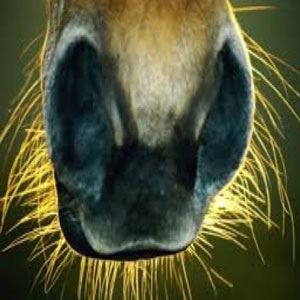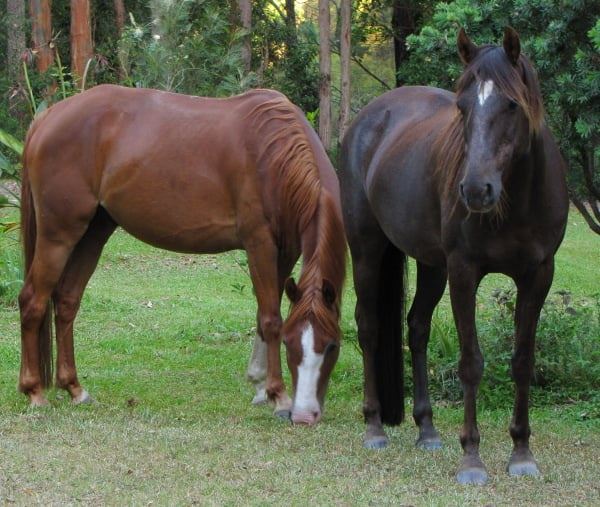- Home
- Pet Owners
- Advice for Horse Lovers
- Whisker Trimming
Whisker Trimming
Have you ever wondered why a horse, and almost every other mammal has facial whiskers, especially around the muzzle area?
A PPGA Member writes: “This reminds me of the time that I shaved my Norwegian Fjords whiskers for a breed show many years ago. After bathing and trimming him to show standard I released him to graze in the garden. He put his head down to graze and completely misjudged the distance and planted his chin onto the ground. The shock was so great for this very sensitive horse that he fell flat on the ground shaking. This event will stay with me and is why whiskers are now present on my herd, permanently. “ J Atkins,
Around the world, more and more countries are realizing this is an unnecessary practice and many have moved towards banning it. Germany and Switzerland have banned the removal of whiskers and there is a growing number of international veterinarians, behaviorists, ethologists and animal welfare advocates whom are calling for an international ban on the practice (2). The Pet Professional Guild unequivocally accepts this stance and encourages all members and the public to do so as well. Let’s leave our horses whiskers as nature intended. References (1) Emerson, L., Griffin, K., & Stephenson, A. (2016). Practice and attitudes regarding trimming of equine vibrissae (sensory whiskers) in the UK and Germany. Journal of Veterinary Behavior: Clinical Applications and Research, 15. 92 (2) Dr Marty Becker – “How their whiskers help the horse see”. Retrieved from https://www.drmartybecker.com/this-and-that/whiskers-help-horses-see/ |

 The Equine facial whiskers are a vital part of their sensory system. Unfortunately, in traditional horse husbandry it is seen as a normal part of “good” equine care to trim the whiskers at regular intervals and is an especially common practice in the horse show world with it being seen as a requirement for showing your horse at every level of competition, from beginner to international equestrianism. There doesn’t seem to be a reason for this tradition, except to define the features and create a clean aesthetic picture. When we begin to explore the world from the horses’ viewpoint we can then begin to see why their first steps in exploration of their world the vibrissae or facial whiskers are. Whiskers help horses judge texture and proximity to objects and to feel the ground beneath their chins, as direct vision below their heads is very limited (1).
The Equine facial whiskers are a vital part of their sensory system. Unfortunately, in traditional horse husbandry it is seen as a normal part of “good” equine care to trim the whiskers at regular intervals and is an especially common practice in the horse show world with it being seen as a requirement for showing your horse at every level of competition, from beginner to international equestrianism. There doesn’t seem to be a reason for this tradition, except to define the features and create a clean aesthetic picture. When we begin to explore the world from the horses’ viewpoint we can then begin to see why their first steps in exploration of their world the vibrissae or facial whiskers are. Whiskers help horses judge texture and proximity to objects and to feel the ground beneath their chins, as direct vision below their heads is very limited (1). To give a horse a natural and fulfilling a life as possible we need to consider how our actions impair their wellbeing. Injury to the face and especially the eyes are a higher risk when their judgment is impaired by a damaged sensory system and their limited ability to learn more about each other and us can also be a problem as well. The possibility of creating a horse that may well be less safe to train and ride should also be considered and finally we also need to consider how removing the whiskers from a foal affects his/her ability to feed safely and confidently from the dam which unfortunately is a common occurrence (delete occurs commonly) in breed shows.
To give a horse a natural and fulfilling a life as possible we need to consider how our actions impair their wellbeing. Injury to the face and especially the eyes are a higher risk when their judgment is impaired by a damaged sensory system and their limited ability to learn more about each other and us can also be a problem as well. The possibility of creating a horse that may well be less safe to train and ride should also be considered and finally we also need to consider how removing the whiskers from a foal affects his/her ability to feed safely and confidently from the dam which unfortunately is a common occurrence (delete occurs commonly) in breed shows.